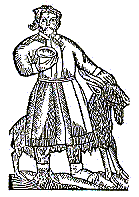| Group | Baltic (with Latvian, Lithuanian etc.), West Baltic (with Old Prussian, Galindan etc.) |
| Geography | Spoken today by minorities in Suvalkija region of Lithuania and Poland, formerly more widespread in modern Poland and Belorussia. |
| History | Sudovians or Yatviags (in Russian) inhabited vast forest regions between the Neman and the Narev rivers. They were mentioned by Ptolemy in his manuscripts as "Sudavans". In the 10th century a lot of Sudovians were united with Kiev Russia by the army of Kiev Prince Vladimir. Three centuries later those of them who managed to survive surrounded by Russian, Polish and Lithuanian realms lost their lands completely to the Great Principality of Lithuania. The language changed greatly since then: a lot of elements were borrowed from Lithuania |
| Phonetics | The language has both long and short vowels, a rich collection of diphthongs and sibilant consonant like in other Baltic languages. The stress is very complicated: Sudovian had the same four nominal accent classes as does Lithuanian, but it retained the original accentual state of Baltic (an acute rising accent and a circumflex falling accent). The first class is the acute baritone paradigm. The second is the circumflex baritone paradigm. Thirdly, the acute mobile paradigm. Lastly, the circumflex mobile paradigm. |
| Morphology | Four or five noun cases are the same as in Old Prussian: nominative, genitive, dative, accusative, vocative. The noun declension is very conservative and preserved many features from the Early Baltic stage. Sudovian verbs have three simple tenses, 3 or 4 moods and a large number of verbal nouns as participles and the infinitive. |
| Lexicon | Sudovian was always situated at the border between languages. This is why a lot of borrowed vocabulary is present in the language: Polish, Lithuanian, Russian, Belorussian. |
| Writing | Latin alphabet |
| Close Contacts | Among Baltic tongues, Sudovian is quite close to Old Prussian - they are the only language of the group which use the neuter gender. Sudovian also contacted much with Slavic. |
| Picture |  |
| More info |